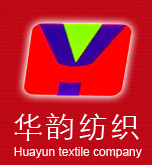Contact us
Counseling hotline0534-6028781- E-mail2692279393@qq.com
- AddressRoom 301, unit two, B building, Donghui building, Dezhou economic development zone.

Functional textiles for military police
重磅||軍警用功能紡織品
1. Special functions of modern military uniforms
There are many types of military uniforms in the world, which can be roughly divided into three categories: dresses, regular uniforms and training uniforms.
With the development of army building, military uniforms are more focused on enabling soldiers to move freely in various conditions and environments, maintaining strong fighting power and ensuring physical health. In terms of the quality of the materials used to make military uniforms, the structure, style, color, and other properties of military uniforms, there have been major improvements compared to the past.
Adapting to the special environment of war is conducive to combat. To charge in gunfire, military uniforms must have certain flame retardant properties. In the rain of gunfire, military uniforms must have the special function of bulletproof; when fighting in rivers, lakes, and seas, military uniforms must have a certain effect of supporting and waterproofing; under the supervision of modern reconnaissance equipment, military uniforms must have certain anti-discovery "invisibility" "Ability; To fight under nuclear, chemical and biological conditions, military uniforms must have the functions of preventing atomic radiation, chemical contamination, and bacteria. In addition, military uniforms should also have functions such as cold and cold protection, temperature adjustment, humidity adjustment, and gas adjustment to ensure that soldiers can fight under various climatic conditions. Therefore, to evaluate the level of military uniforms, not only the quality and quantity of military uniforms, but also the anti-injury function of military uniforms, the ability to adapt to various environments, and whether it is convenient for action and other factors.
2. Military functional fabric
With the rapid development of nuclear, biological, and chemical weapons, automatic weapons, and surveillance equipment, improving the comprehensive performance of military uniforms and various military supplies has become an important development direction for military support. The battlefield filled with smoke is unpredictable. Military uniforms and most munitions must have certain fire performance, bulletproof function, waterproof function, anti-atomic radiation function, anti-chemical contamination function, anti-bacterial attack function and so on. In order to ensure that soldiers fight in various climatic conditions.
At present, the military uniforms and military materials of countries around the world are developing towards high performance, multi-function, compounding and intelligence. Our country has also developed rapidly in this regard. The following is a brief description of a few major military fabrics.
(1) Sweat-absorbent, moisture-permeable, quick-drying fabric
Internationally, military uniforms generally use wool or wool-polyester blended fabrics. Due to the low wool production in my country, our soldiers' clothing has always used good, polyester card fabrics. This fabric has problems such as air permeability, static electricity, poor anti-wrinkle and shape retention. If the clothing of millions of soldiers is made entirely of wool, the country will spend a lot of money every year to import wool. In addition, wool fabrics must be dry-cleaned and ironed. Some grassroots companies do not have the conditions for dry-cleaning and ironing. Therefore, it has always been a problem for soldiers to wear woolen military uniforms.
At present, my country's annual output of chemical fiber is more than 6 million tons, which is the world's largest chemical fiber production country. However, most of them are mainly low-end conventional varieties, and the proportion of differentiated fibers is very low, especially the output of high-performance chemical fibers is extremely low, and the varieties are very few, which makes the development of high-performance functional textiles in my country a bottleneck, and high-end clothing fabrics still need to be imported in large quantities. The Military Equipment Research Institute of the General Logistics Department used synthetic fibers instead of wool to solve the world problems of aurora, static electricity, pilling and pilling in the process of chemical fiber imitation, and developed and produced apparel fabrics suitable for China's national conditions, imitation wool and super hair, and high quality and low price. According to the characteristics of soldiers fighting and training missions, they increase the moisture permeability and perspiration of the fabric, making the fabric easy to wash and dry quickly; according to the high anti-static requirements of military uniforms in high-tech weapons in future wars, they are specially compounded The conductive wire is woven into the fabric in an appropriate way, effectively avoiding the generation of static electricity.
This fabric and composite deformed polyester filament has the characteristics of comfortable wearing, anti-wrinkle shape retention, anti-static, abrasion resistance, moisture absorption and moisture permeability, easy washing and quick drying. The fiber is comfortable and wearable due to its good summer clothing. Wet and quick-drying and known as "cool polyester".
(2) High temperature resistant flame retardant fabric
High temperature resistant and flame retardant fabrics are mainly used for the production of combat protective clothing for special forces such as firefighters, strategic missile units, naval ships, and air force pilots in satellite launch centers, to reduce and avoid casualties of finger fighters in various forms of heat transfer (including war and nuclear explosions). It is also used in fire-resistant, flame-retardant materials and thermal protective clothing for fire protection, metallurgy, aerospace, chemical, and textile industries.
The combustion performance of various fibers is different, expressed by the oxygen index (LOI value). The greater the LOI value, the less flammable. LOI<20 is flammable fiber, LOI=20-26 is flammable fiber, LOI=26-34 is flammable fiber, and LOI>35 is non-combustible fiber. The following is the oxygen index (LOI value) of several commonly used textile fibers.
As can be seen from the table above, some fibers are easy to burn, such as cotton and acrylic fibers are flammable fibers; and some fibers are inherently flame retardant, such as aramid fiber is a flame-retardant fiber. Therefore, aramid has become the most widely used main fiber for military flame retardant fabrics, and aramid/cotton fabrics are commonly used.
(3) Waterproof and breathable fabric
Water-proof and moisture-permeable fabric means that the fabric can not only prevent rain, ice and snow, but also has moisture permeability, and can quickly and effectively distribute the sweat that the human body eliminates. If the sweat of the human body cannot be discharged in time, water vapor will be generated in the fabric and condense, thereby reducing the warmth retention of clothing and the like.
PTFE laminated fabric is currently the best waterproof and breathable fabric in all aspects of the world. It has a wide range of uses and represents the current research direction in this field in the world. From the perspective of foreign development, it has been used in military extreme cold area protective clothing, tents, mountaineering clothing, spacesuits, all-weather sportswear, sports shoes, gloves, medical surgical clothing and so on. The main materials are
(4) Bulletproof fabric
The bulletproof vest made of bulletproof fabric is an indispensable protective clothing for soldiers in modern warfare. It has the function of preventing bullets and shrapnel. Soldier bulletproof equipment has gone through the transition from metal shields to non-metallic composite materials, and from simple synthetic materials (such as nylon, Kevlar, etc.) to composite materials and metal armor plates, ceramic plates and other composite bulletproof systems. . New technologies and new materials play a decisive role in improving the ballistic resistance of ballistic fabrics. Some new synthetic fibers such as zylon, also known as PBO spider silk, because of its high impact resistance, has become an ideal material against various debris and bullets, and can reduce the weight of bulletproof clothing and improve bulletproof capabilities.
Bulletproof fabrics are generally woven from high-performance synthetic fibers such as Kevlar, high-strength, high-density polyethylene. Its main mechanism is soft steel. When the bullet hits, the bulletproof fabric is stretched to disperse the impact energy in the fabric fibers. This type of bulletproof fabric is a whole, and a relatively large area can offset the penetrating effect of the bullet and can effectively terminate the advancement of the bullet. Some bulletproof fabrics are composed of a hard bulletproof layer composed of highly efficient ultra-thin bulletproof steel sheets or ceramic sheets and a soft bulletproof layer composed of high-performance synthetic fibers. The bulletproof effect of course is also completed by these two bulletproof layers. When the bullet hits the hard bulletproof layer, due to its high strength and high toughness, 92% of the kinetic energy of the bullet is consumed and dispersed, and the remaining bullet energy is converted into thermal energy, which deforms or shatters the bullet itself Then, the soft bulletproof layer further disperses and consumes the bullet energy absorbed by the hard bulletproof layer.
At present, the synthetic fibers used in bulletproof fabrics mainly include aramid and high-strength polyethylene fibers. Such as aramid 1414. Among the aromatic polyamide fibers, the most representative high-strength, high-modulus, and high-temperature-resistant fiber is polyparaphenylene terephthalamide (PPTA) fiber, and DuPont's trade name is "Kevlar". PPTA fiber has excellent physical and mechanical properties, and has a wide range of applications, such as industrial tire cords, high-strength ropes and pressure-resistant containers; military aspects such as bulletproof vests, bulletproof helmets, parachutes, armor plates, etc.; aerospace aspects such as Aircraft structure and interior decoration materials, fuselage, wings, rocket engine shell, etc.
(5) Anti-virus fabric
Anti-virus fabric is mainly used for making anti-virus clothing. Anti-virus clothing can protect soldiers in a toxic environment from gas and liquid toxic substances, and protect soldiers from gas bombs. Anti-virus fabrics mainly have three types: isolation type, adsorption type and detoxification type.
l Isolated anti-virus fabric
Isolated anti-virus fabrics are rubber coated products. Although it can better protect the skin from the harm of poisonous gas and venom, it is cumbersome to wear, inconvenient to move, and impedes the evaporation of sweat due to impermeability, which makes people feel sultry and uncomfortable, so its use is limited.
l Adsorption type anti-virus fabric
Adsorption type anti-toxic fabric uses activated carbon and other materials with fine pores to adsorb toxic gas and venom substances. This is physical adsorption, and it does not eliminate the toxicity of toxic reagents. There are many varieties of this anti-virus fabric, some of which spin activated carbon in the fiber, some attach the activated carbon powder to the fabric, and some disperse the activated carbon powder in the foam plastic. This anti-virus fabric has good air permeability, light weight and excellent anti-virus effect. Modern adsorptive anti-virus fabrics are double-layered fabrics with a fabric sandwiched with activated carbon in the middle. They have a soft feel and a large drug-absorbing area.
l Detoxifying anti-virus fabric
The detoxification type detoxification fabric utilizes the chemical substance attached to the fabric to react with the poison agent to make it lose toxicity and achieve the purpose of antivirus. If the fabric is impregnated with chloramide solution, the protective effect is obvious. There is also a kind of anti-virus fabric impregnated with a microporous polyurethane material with a chromium-containing complex, which is inconvenient to use because it is flammable and easily broken. In the mid-1980s, fabrics made with microporous hollow fibers had excellent anti-toxic effects. The inner layer of the hollow fiber may be filled with at least one antidote that can suppress toxic chemical and biological agents. Since the antidote is encapsulated in the inner layer of the microporous hollow fiber, the concentration of the antidote, whether solid or liquid, is often higher than that of the conventionally used impregnated fabric, and due to the porosity of the microporous hollow fiber With a large surface area, the contact area between the antidote and the poison is increased, the antivirus effect is good, and the application range of the antidote is wide.
Such hollow fibers are generally made of inert polymers, such as polyolefins, polyamides, polyesters, polyvinyl chloride, etc. The choice of polymer depends on the nature of the antidote.





